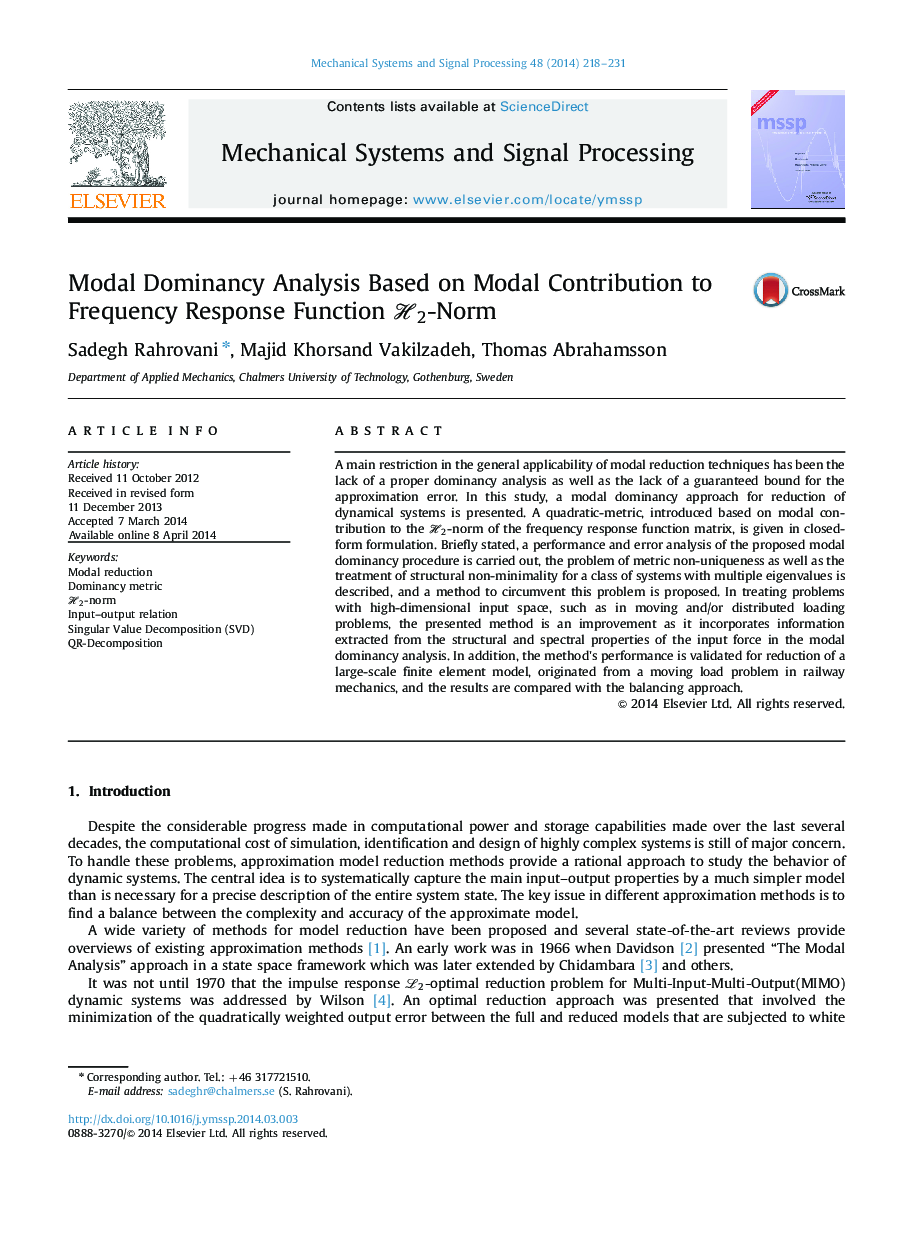| Article ID | Journal | Published Year | Pages | File Type |
|---|---|---|---|---|
| 560321 | Mechanical Systems and Signal Processing | 2014 | 14 Pages |
•The main restriction in modal reduction techniques is in the lack of proper dominancy procedure.•A modal dominancy procedure for modal dominancy analysis of mechanical systems is presented.•Also a SVD-based technique to improve the reduction effectiveness in moving and distributed loading problems is presented.
A main restriction in the general applicability of modal reduction techniques has been the lack of a proper dominancy analysis as well as the lack of a guaranteed bound for the approximation error. In this study, a modal dominancy approach for reduction of dynamical systems is presented. A quadratic-metric, introduced based on modal contribution to the ℋ2ℋ2-norm of the frequency response function matrix, is given in closed-form formulation. Briefly stated, a performance and error analysis of the proposed modal dominancy procedure is carried out, the problem of metric non-uniqueness as well as the treatment of structural non-minimality for a class of systems with multiple eigenvalues is described, and a method to circumvent this problem is proposed. In treating problems with high-dimensional input space, such as in moving and/or distributed loading problems, the presented method is an improvement as it incorporates information extracted from the structural and spectral properties of the input force in the modal dominancy analysis. In addition, the method׳s performance is validated for reduction of a large-scale finite element model, originated from a moving load problem in railway mechanics, and the results are compared with the balancing approach.
